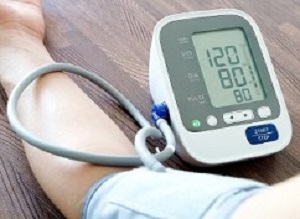 Hypertension, or high blood pressure, is a widespread clinical problem affecting nearly half of all adults. Despite the serious consequences that can result from hypertension, which puts patients at increased risk for heart attacks, strokes and other cardiovascular events, elevated blood pressures often remain untreated or under-treated for years, and the control rate for hypertension hovers at just 50%.
Hypertension, or high blood pressure, is a widespread clinical problem affecting nearly half of all adults. Despite the serious consequences that can result from hypertension, which puts patients at increased risk for heart attacks, strokes and other cardiovascular events, elevated blood pressures often remain untreated or under-treated for years, and the control rate for hypertension hovers at just 50%.
Seeing opportunities for improvement, innovators and clinicians at Brigham and Women's Hospital have developed a new home-based, care-delivery programme aimed to improve hypertension control rates quickly and at significantly lower cost than traditional, office-based blood pressure programmes. The new approach, piloted among 130 participants, helped 81% of patients bring their blood pressures under control in, on average, just seven weeks.
"This is a striking result, especially given the very short time frame in which control was reached: an average of seven weeks," said corresponding author Dr Naomi Fisher, director of the Hypertension Service and Hypertension Specialty Clinic at the Brigham. "There are a few notable health care systems that have matched or exceeded this control rate, but most clinical practices do not approach this rate of success."
To overcome some of the challenges that clinical practices face, Fisher and colleagues combined several innovative strategies to create their programme. Enrolled participants each received a Bluetooth-enabled blood pressure device that could automatically transmit the blood pressure measurements patients took at home into their electronic medical records. Patients had easy and frequent access to "patient navigators" – non-physicians who had been trained to use a clinical algorithm developed by hypertension specialists. The programme enabled rapid assessment and medication dosage adjustments for the patients.
The pilot was conducted as a prospective cohort study. The team enrolled 130 patients whose blood pressure was uncontrolled (greater than 140/90 mmHg). Patients were recruited from two clinics to test efficacy in two settings: a Brigham primary care clinic (800 Huntington Ave.), and the Brigham's Watkins Cardiovascular Clinic. All adults were eligible except pregnant women and those with advanced kidney disease. Enrolled patients were given a Bluetooth-enabled blood pressure device and taught how to use it.
Patients were instructed to measure their blood pressure at home twice daily in duplicate. Medication adjustments were made every two weeks until home blood pressure was controlled at <135/85 mmHg.
The team's next step will be to scale up the programme to test its generalisability and sustainability. With this approach, the team anticipates significant cost effectiveness and cost savings, in addition to the prevention of cardiovascular events and death from treating hypertension more intensively in men and women.
"The time-honoured model of treating hypertension via traditional visits to the doctor is neither effective nor sustainable," said Fisher. "Development of innovative solutions to manage hypertension effectively and efficiently, and thus reduce the cardiovascular risk burden in larger populations, is critical. Organisations can and should develop and adopt innovative technologies to create sustainable solutions for the control of hypertension."
Abstract
Background: Hypertension remains poorly controlled on the population level. National rates of control, even when defined leniently by BP < 140/90 mm Hg, are only ~50%. As growing healthcare costs coincide with tighter blood pressure (BP) targets, innovative management programs are needed to maximize efficiency of care delivery and optimize control.
Hypothesis: We aimed to develop a remote, navigator‐led hypertension innovation program that would leverage algorithmic care pathways, home BP measurements and patient coaching to allow rapid and complete medication titration.
Methods: A multidisciplinary group of clinical experts from subspecialties and primary care collaborated to develop an evidence‐based clinical algorithm, designed to be automated and administered by non‐licensed patient navigators. In the development stage, a prospective pilot cohort of 130 patients was managed by nurse practitioners and pharmacists to ensure efficacy and safety. Patients with clinic BP ≥ 140/90 mm Hg were enrolled and given a Bluetooth‐enabled BP device. Home BPs were transmitted automatically into the electronic medical record. Medication titrations were performed by phone at biweekly intervals, based upon weekly average BP, until home BP was controlled at <135/85 mm Hg.
Results: Eighty‐one percent of all enrolled, and 91% of those patients who regularly measured home BP achieved goal, in an average of 7 weeks. Control was reached similarly across races, genders, and ages.
Conclusions: A home‐based BP control program run by non‐physicians can provide efficient, effective and rapid control, suggesting an innovative paradigm for hypertension management. This program is effective, sustainable, adaptable, and scalable to fit current and emerging national systems of healthcare.
Authors
Naomi DL Fisher, Liliana E Fera, Jacqueline R Dunning, Sonali Desai, Lina Matta, Victoria Liquori, Jaclyn Pagliaro, Erika Pabo, Mary Merriam, Calum A MacRae, Benjamin M Scirica
[link url="https://www.brighamandwomens.org/about-bwh/newsroom/press-releases-detail?id=3237"]Brigham and Women’s Hospital material[/link]
[link url="https://onlinelibrary.wiley.com/doi/full/10.1002/clc.23141"]Clinical Cardiology abstract[/link]
